Duration of immunity and effectiveness of diphtheria-tetanus-acellular pertussis vaccines in children

The United States has experienced a nationwide resurgence of pertussis since the mid-1970s, despite high estimated vaccine coverage. Short-lived immunity induced by diphtheria-tetanus-acellular pertussis (DTaP) vaccines in young children is widely believed to be responsible for this growing burden, but the duration of protection conferred by DTaP vaccines remains incompletely quantified.To assess the duration of immunity and the effectiveness of DTaP vaccines in US children.A mathematical, age-structured model of pertussis transmission, previously validated empirically on incidence data in Massachusetts, was used in this simulation study to assess the duration of DTaP immunity most consistent with the empirical values of the relative increase in the odds of acquiring pertussis from recent epidemiologic studies in the United States. The study included 5 simulated cohorts of children born between January 1, 2001, and December 31, 2005, followed up between the ages of 5 and 9 years (study period, January 1, 2006, to December 31, 2014). Statistical analysis was performed from May 1 to December 1, 2017.Vaccination with DTaP according to the US immunization schedule, with a range of assumptions regarding the degree of waning immunity.Vaccine effectiveness and relative change in the odds of acquiring pertussis (odds ratio) in children aged 5 to 9 years, duration of DTaP immunity, and vaccine population-level impact.This study found a marked association between the degree of waning immunity, vaccine effectiveness, and the odds ratio. Counterintuitively, the odds ratio was positively associated with vaccine effectiveness, as a consequence of nonlinear, age-assortative transmission dynamics. Based on the empirical odds ratios (1.33; 95% CI, 1.23-1.43), it was estimated that vaccine effectiveness exceeded 75% in children aged 5 to 9 years and that more than 65% of children remained immune to pertussis 5 years after the last DTaP dose.The results of this study suggest that temporal trends in the odds of acquiring pertussis are an unreliable measure of the durability of vaccine-induced protection. They further demonstrate that DTaP vaccines confer imperfect, but long-lived protection. Control strategies should be based on the best available estimates of vaccine properties and the age structure of the transmission network.
